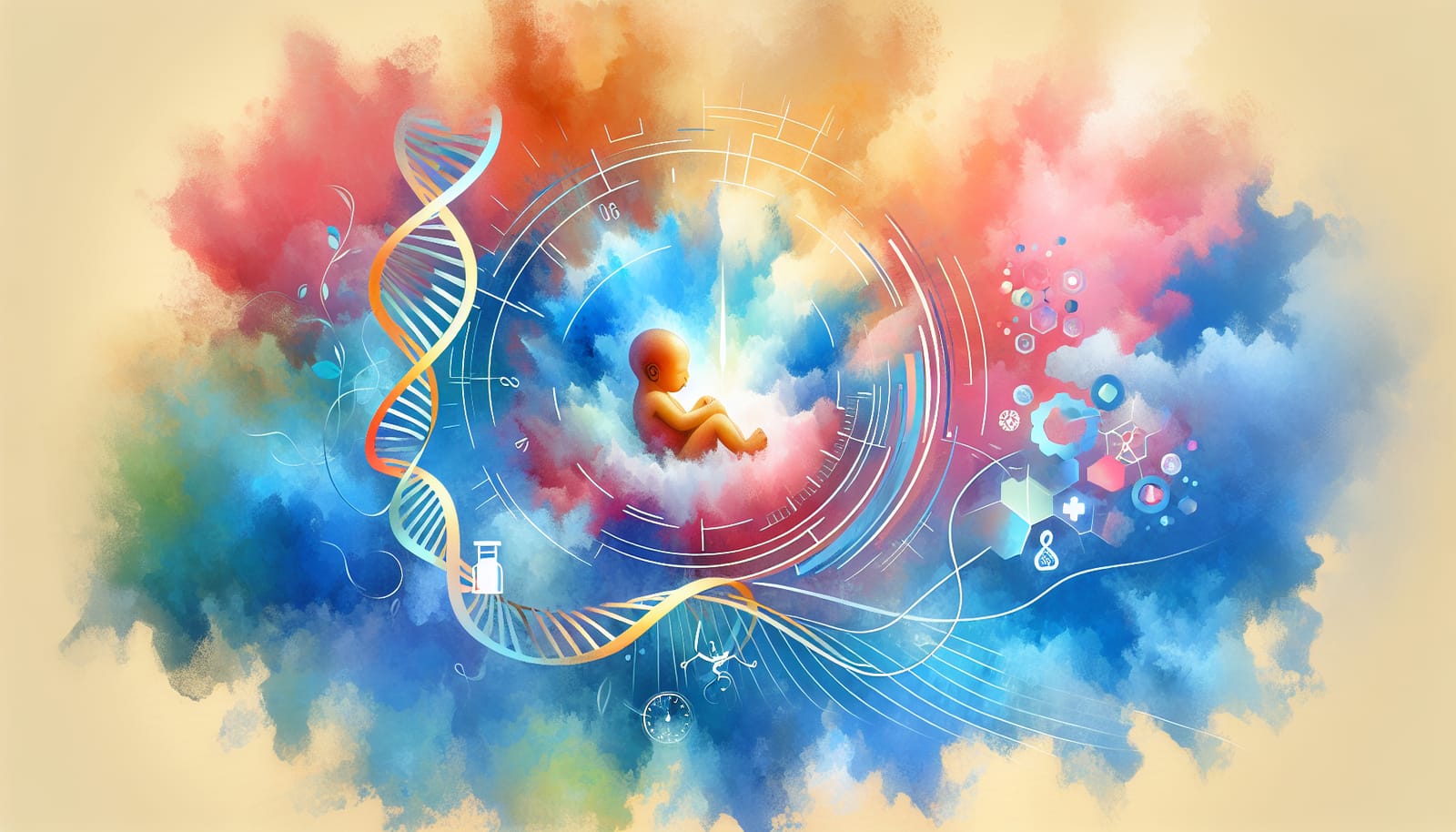In a heartwarming journey of hope and innovation, KJ Muldoon made his grand entrance into the world last August, facing the challenge of a rare genetic disorder known as CPS1 deficiency. This condition can lead to a dangerous accumulation of ammonia in the bloodstream, posing serious health risks. However, just six months after his birth, KJ was the recipient of a remarkable CRISPR treatment tailored specifically for him.
CPS1 deficiency affects the body's ability to process ammonia due to a lack of a vital enzyme. Tragically, about half of the infants born with this condition may not survive their early years. Traditional treatments, such as restrictive diets and liver transplants, are not ideal solutions. Yet, a dedicated team at the Children’s Hospital of Philadelphia and Penn Medicine successfully navigated the usual lengthy drug development process, creating a personalized CRISPR therapy for KJ in just a few months.
Kiran Musunuru, a professor of translational research at the University of Pennsylvania and a member of the team, expressed the urgency of their mission: “We had a patient who was facing a very, very devastating outcome.” At birth, KJ struggled with stiffness, lethargy, and feeding difficulties. After receiving three doses of his custom treatment, his progress has been nothing short of inspiring. He is beginning to hit developmental milestones that his family once thought were out of reach. "He really has made tremendous strides," says his father, Kyle Muldoon.
The promising results of KJ’s case were highlighted in a recent study published in The New England Journal of Medicine and shared at the American Society of Gene & Cell Therapy's annual meeting in New Orleans. This groundbreaking work could pave the way for similar personalized gene-editing treatments for other patients battling rare diseases with limited options.
Ammonia is a natural byproduct of protein digestion, and without the CPS1 enzyme, it can lead to severe health complications. Since KJ's birth, he had been on medication to lower ammonia levels and was restricted to a low-protein diet. Thanks to the bespoke CRISPR therapy, he has been able to reduce his medication dosage and enjoy more varied foods without any significant side effects. While he remains in the hospital, there is hope that he will be able to return home soon.
While KJ's medical team and family refrain from declaring the CRISPR therapy a definitive cure, they are encouraged by his progress. Rebecca Ahrens-Nicklas, the director of the Gene Therapy for Inherited Metabolic Disorders Frontier Program at Children’s Hospital of Philadelphia, emphasizes the need for continued observation: “It’s still very early, so we will need to continue to watch KJ closely to fully understand the full effects of this therapy.” She believes the treatment has likely transformed KJ’s severe deficiency into a milder form of the disease, suggesting that he may still require medication in the future.
In a collaborative effort, Ahrens-Nicklas and Musunuru began exploring the potential for customized gene-editing therapies in 2023, focusing on urea cycle disorders like CPS1 deficiency. They sought alternatives to liver transplants, which, while possible in infants, pose significant medical challenges.
Upon KJ's birth, researchers employed genome sequencing to pinpoint the specific mutations responsible for his condition. They discovered that KJ inherited two distinct mutations in the CPS1 gene—one from each parent. The team chose to address the mutation previously documented in another patient with severe CPS1 deficiency, while the other mutation had not been seen before.
Utilizing CRISPR, a groundbreaking technology capable of precise DNA editing, the team crafted KJ’s therapy. While only one CRISPR-based drug is currently available on the market, the potential for this technology to directly target the genetic roots of diseases is incredibly exciting. The approved CRISPR therapy, Casgevy, treats sickle cell disease and beta thalassemia and is administered as a one-time treatment. However, KJ’s therapy was specifically designed to be redosable for safety reasons, allowing for gradual doses to monitor for any adverse reactions.
For KJ’s treatment, the researchers implemented a version of CRISPR known as base editing, which allows for precise changes in DNA sequences. They packaged the editing components in tiny lipid nanoparticles, which were infused through an IV.
Before administering the treatment to KJ, rigorous safety tests were conducted in mice and monkeys. Given that the therapy was experimental, the team sought and received approval from the FDA in a remarkably swift timeframe, allowing KJ to receive his first dose in late February.
Timothy Yu, a neurologist at Boston Children’s Hospital, commended the Philadelphia team’s thoughtful approach, stating, “The clinical responses described are impressive.” Yu’s own research focuses on customized genetic medicines, showcasing the vast potential of such personalized treatments.
While the CRISPR technology holds immense promise for addressing various genetic disorders and cancers, challenges remain in delivering it effectively throughout the body. Current therapies, like Casgevy, involve complex procedures, but researchers are hopeful that simpler methods for delivering CRISPR treatments will emerge.
Given that urea cycle disorders primarily originate in the liver, they present a unique opportunity for custom CRISPR medicines. Fyodor Urnov, scientific director at the Innovative Genomics Institute at UC Berkeley, noted that KJ’s case exemplifies how rapidly and effectively bespoke genetic treatments can be developed for critically ill patients.
The journey to create KJ's therapy was not without its hurdles. While the exact production cost remains undisclosed, it is comparable to a liver transplant, a significant investment in KJ’s future. Companies involved in the process generously contributed their resources, demonstrating a spirit of collaboration and support.
Musunuru shares an optimistic vision for the future: “Though it will take a lot of work to get there, my hope is that someday no rare disease patients will die prematurely from misspellings in their genes, because we'll be able to correct them.” This sentiment embodies the essence of hope and progress in the field of personalized medicine, shining a light on the possibilities that lie ahead for patients like KJ and many others.


